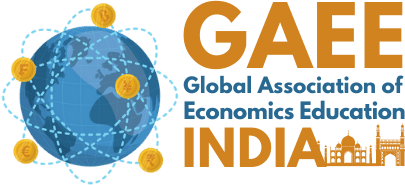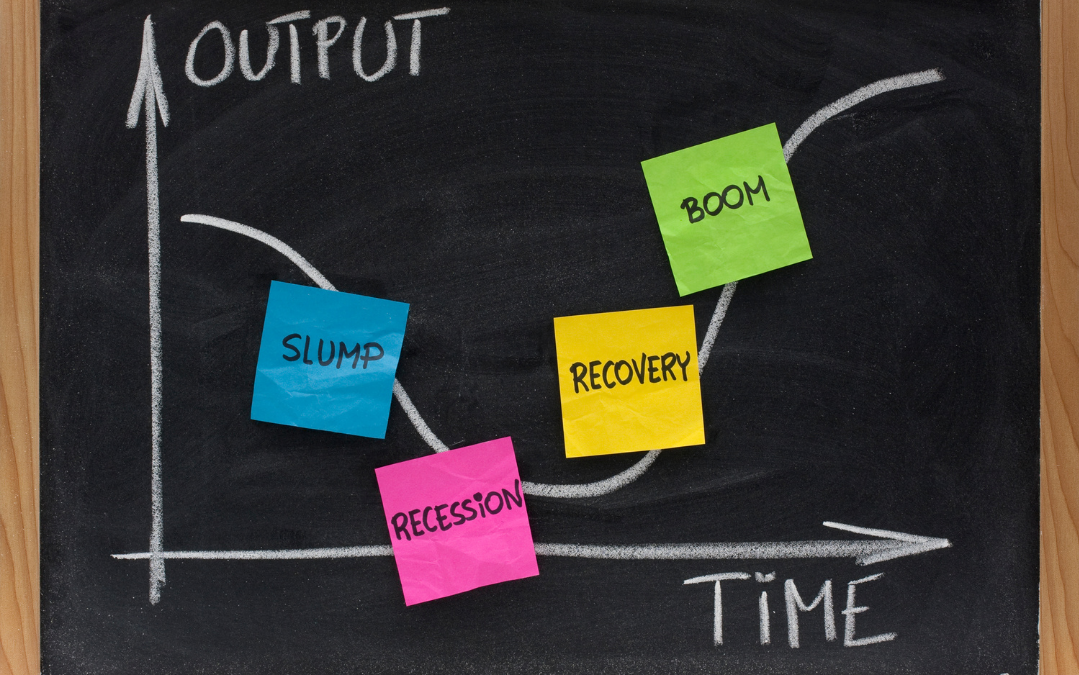Author’s name: Prithvi Raj
Author’s affiliation: Delhi Technical University
Author’s contact info: [email protected]
A business cycle is a pattern of changes in the Gross Domestic Product (GDP) around its drawn out common development rate. It clarifies the development and withdrawal in monetary movement that an economy encounters over the long haul.
A business cycle is finished when it experiences a solitary blast and a solitary constriction in succession. The time span to finish this arrangement is known as the length of the business cycle. A blast is described by a time of fast monetary development though a time of generally deteriorated financial development is a downturn. These are estimated as far as the development of the genuine GDP, which is expansion changed.
Phases of the Business Cycle
In the outline over, the straight line in the centre is the consistent development line. The business cycle moves about the line. The following is a more definite portrayal of each stage in the business cycle:
#1 Expansion
The principal stage in the business cycle is development. In this stage, there is an increment in sure monetary pointers, for example, work, pay, yield, compensation, benefits, request, and supply of merchandise and enterprises. Debt holders are for the most part paying their obligations on schedule, the speed of the cash supply is high, and speculation is high. This cycle proceeds as long as financial conditions are positive for extension.
#2 Peak
The economy at that point arrives at an immersion point, or pinnacle, which is the second phase of the business cycle. The most extreme constraint of development is accomplished. The monetary pointers don’t become further and are at their most elevated. Costs are at their pinnacle. This stage denotes the inversion point in the pattern of financial development. Buyers will in general rebuild their financial plans now.
#3 Recession
The downturn is the stage that follows the pinnacle stage. The interest for merchandise and ventures begins declining quickly and consistently in this stage. Makers don’t see the abatement sought after immediately and continue delivering, which makes a circumstance of abundance supply on the lookout. Costs will in general fall. All sure financial pointers, for example, pay, yield, compensation, and so on, thusly begin to fall.
#4 Depression
There is an equivalent ascent in joblessness. The development in the economy proceeds to decrease, and as this falls beneath the consistent development line, the stage is called sadness.
#5 Trough
In the downturn stage, the economy’s development rate gets negative. There is further decay until the costs of elements, just as the interest and supply of merchandise and enterprises, arrive at their absolute bottom. The economy in the long run arrives at the box. It is the negative immersion point for an economy. There is broad exhaustion of public pay and consumption.
#6 Recovery
After this stage, the economy goes to the phase of recuperation. In this stage, there is a turnaround from the box and the economy begins recuperating from the negative development rate. Request begins to get because of the most minimal costs and, thusly, supply begins responding, as well. The economy builds up an uplifting mentality towards speculation and business and creation begins expanding.
Work starts to rise and, because of gathered money offsets with the investors, loaning likewise shows positive signs. In this stage, deteriorated capital is supplanted by makers, prompting new interests in the creation cycle.
Recuperation proceeds until the economy re-visitations of consistent development levels. It finishes one full business pattern of blast and withdrawal. The outrageous focuses are the pinnacle and the box.
Clarifications by Economists
John Keynes clarifies the event of business cycles because of vacillations in total interest, which carry the economy to present moment harmonies that are not the same as a full-work balance. Keynesian models don’t really demonstrate occasional business cycles yet suggest recurrent reactions to stuns by means of multipliers. The degree of these vacillations relies upon the degrees of speculation, for that decides the degree of total yield.
In actuality, business analysts like Finn E. Kydland and Edward C. Prescott, who are related with the Chicago School of Economics, challenge the Keynesian hypotheses. They consider the changes in the development of an economy not to be an aftereffect of financial stuns, however a consequence of innovation stuns, for example, advancement.
Highlights of Business Cycles:
Despite the fact that distinctive business cycles contrast in length and force they have some normal highlights which we clarify underneath:
- Business cycles happen intermittently. In spite of the fact that they don’t show same routineness, they have some particular stages, for example, extension, pinnacle, constriction or wretchedness and box. Further the length of cycles differs a decent arrangement from least of two years to a limit of ten to twelve years.
- Also, business cycles are Synchronic. That is, they don’t cause changes in any single industry or area yet are of comprehensive character. For instance, discouragement or compression happens all the while in all businesses or areas of the economy. Recession passes starting with one industry then onto the next and chain response proceeds till the entire economy is in the hold of downturn. Comparative cycle is grinding away in the extension stage, thriving spreads through different linkages of info yield relations or request relations between different enterprises, and areas.
- Thirdly, it has been seen that vacillations happen in degree of creation as well as at the same time in different factors, for example, work, venture, consumption, pace of interest and value level.
- Finally, business cycles are worldwide in character. That is, when begun in one country they spread to different nations through exchange relations between them. For ex-adequate, if there is a downturn in the USA, which is an enormous shipper of products from different nations, will cause a fall popular for imports from different nations whose fares would be antagonistically influenced causing downturn in them as well. Wretchedness of 1930s in USA and Great Britain immersed the whole capital world.


Recent Comments